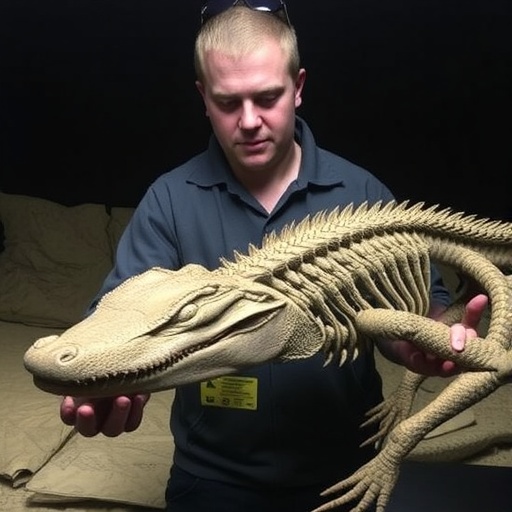About 95 million years ago, during the mid-Cretaceous period, a small crocodyliform wandered the ancient landscape near what is now southwest Montana. This juvenile creature, affectionately nicknamed Elton by its discoverers, measured no longer than two feet in length, placing it among the smallest members known from the Neosuchia clade—a broad and diverse group that includes modern crocodilians as well as their extinct kin. Unlike the majority of its relatives, which are typically large and aquatic or semi-aquatic with simple conical teeth, Elton was a terrestrial animal characterized by an intriguing array of heterodont teeth, suggesting a varied diet and a unique ecological niche.
The discovery of Elton emerged from a 2021 fieldwork expedition in the Blackleaf Formation, a geologic deposit from the Cenomanian age, which stretches across parts of southwest Montana. Harrison Allen, then a recent graduate student in paleontology at Montana State University (MSU), first noticed a small fossilized specimen with an unusual texture. Despite its diminutive size—only about the width of a pinkie finger—this fossil sparked immediate interest due to its remarkably articulated state and well-preserved anatomy. Under the guidance of MSU professor David Varricchio, this tiny croc skull soon revealed its extraordinary scientific potential




